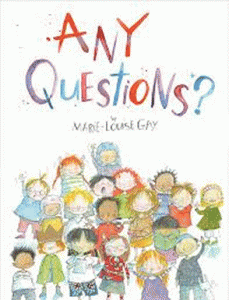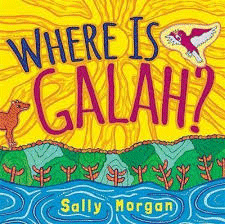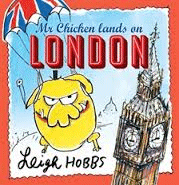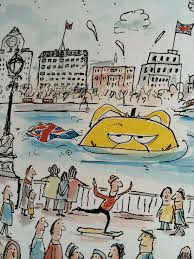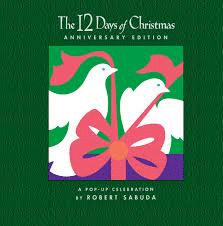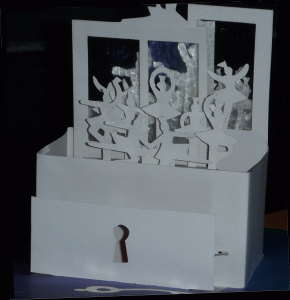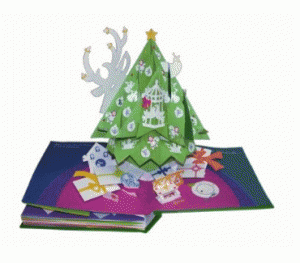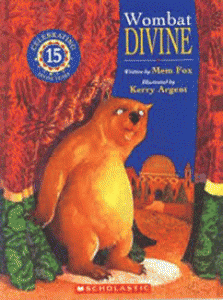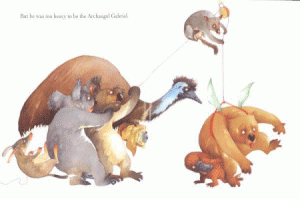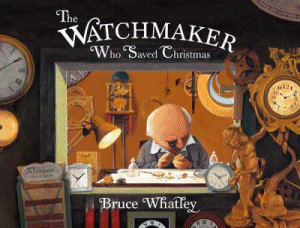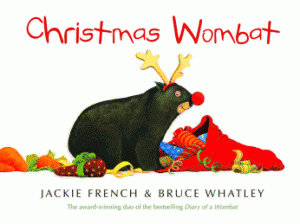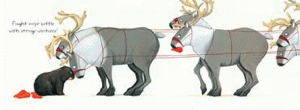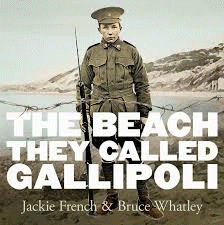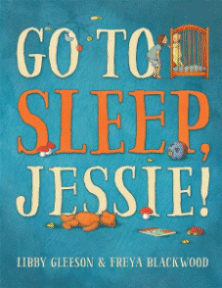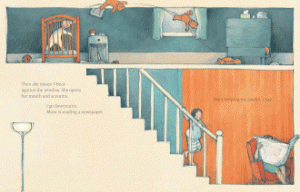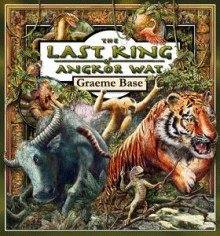Any Questions?
Marie-Louise Gay
Allen & Unwin, 2015
hbk., 60pp., RRP $A19.99
9781760113179
For the students, an author visit to their school is often better than a visit from Santa because instead of just once a year, they get to revisit the warm, fuzzy feelings every time they pick up a work by the author.
For the author, it might not be so memorable but the authors I know say it is always fun and often inspirational. Take the visits that Marie-Louise Gay has made. She knows she is going to get a barrage of questions, questions she hears each time from each audience like “What inspired you to write this book?” and “Where do your ideas come from?’ and “Where does a story start?”
It is this last one that has inspired this unique book from this talented author/illustrator. Where does a story start. “A story always starts on a blank white page… and if you stare long enough at a blank piece of paper, anything can happen…” A white page could become a snowstorm, old yellowish paper might take you back to the time of the dinosaurs and purple paper could put you in the middle of a thunderstorm. Or sometimes a story will start with words and ideas floating around, captured, recorded, saved or discarded. And so it begins to build… who lives in this setting and what might happen to them?
Capturing the beginnings of a story in text and graphics helped by those children who were asking the questions, Ms Gay takes the reader on a journey through the imaginative process that is as creative as her ideas. Then having taken those ideas and shaken them and turned them upside-down she discovers that her central character is a shy, young giant with birds nesting in his hair. And for a few pages she tells his story until something happens and the story is turned over to the children to continue as a collaborative effort. Then she steps in again to finish it. Except the children don’t want it to end and are inspired to write another one.
This is a most intriguing book that invites the reader’s imagination and interaction. Text and illustrations are integral, particularly the words of the children and this might make it tricky to share as a whole-class read-aloud but it is perfect to share with a small group about to start on the writing process. Young writers often sort out their ideas by drawing first and the concept of letting the colour of the paper suggest the setting is inspirational, particularly if you are focusing on the meanings of words like setting, characters and plot. Have a brainstorm session of possibilities with various sheets of coloured paper, have them draw the setting then think about the characters that would fit into it and from there develop the story. It works! It brought those ideas to life in a way that breathed life into my explanations and allowed them to explore them in a really practical way.
This book will excite teachers as much as it inspires their budding writers. There is a queue of reservations for it!
